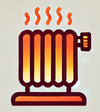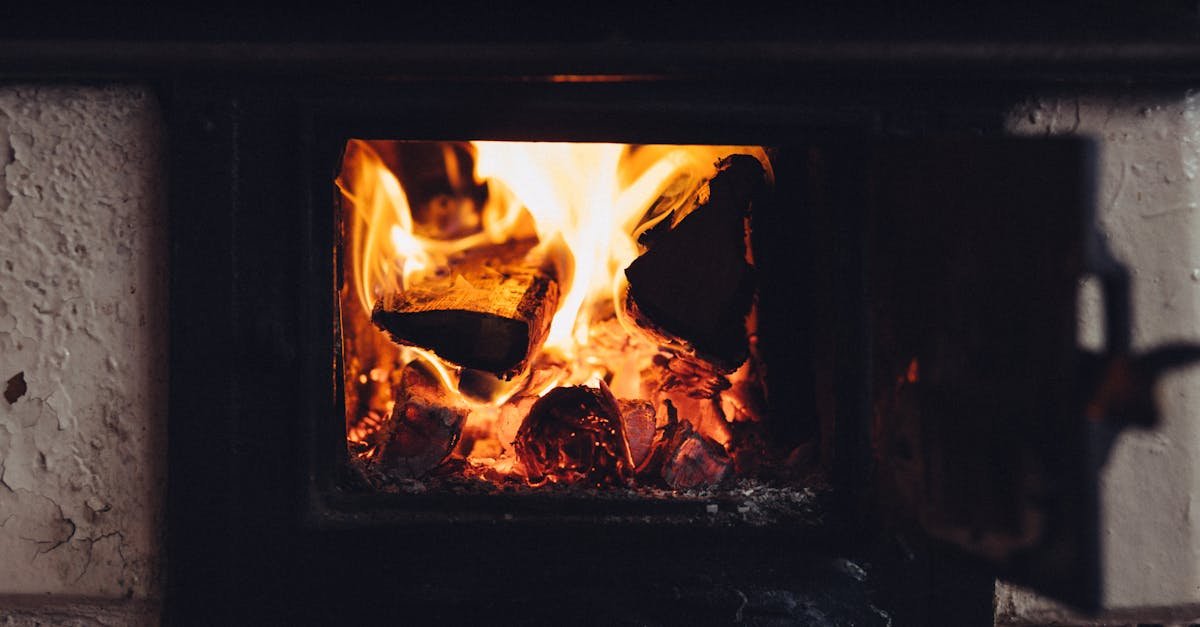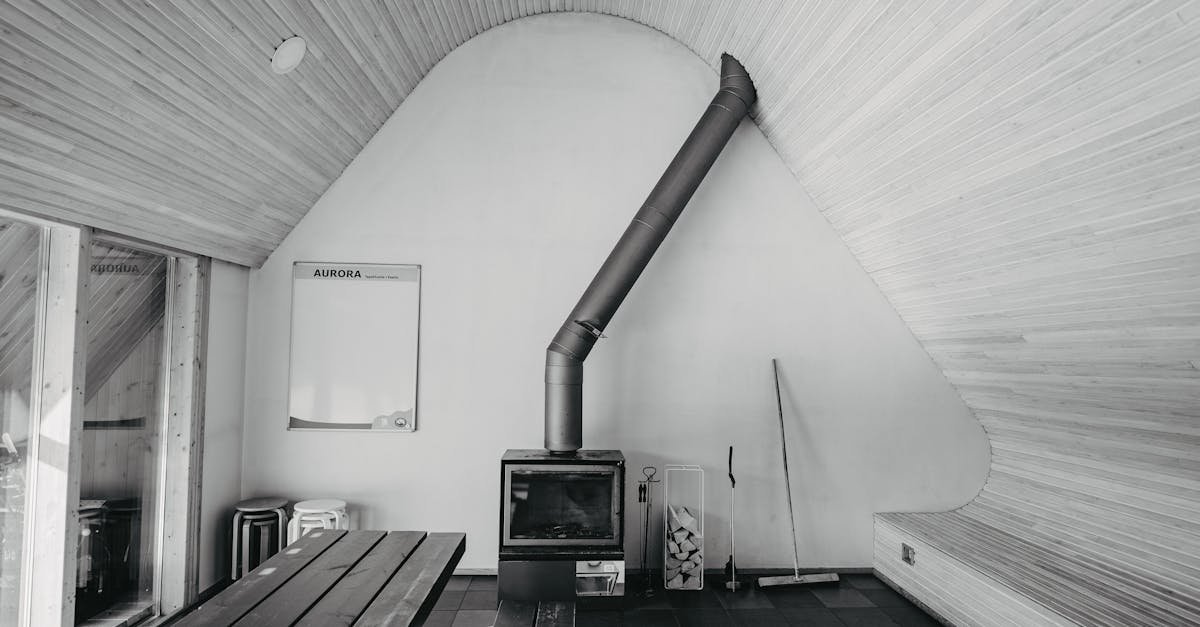When it comes to choosing between radiant and convection heaters, radiant heaters are best for quick, direct warmth while convection heaters excel at heating entire rooms. Radiant heaters work by emitting infrared heat that warms objects and people directly, making them ideal for spot heating. On the other hand, convection heaters circulate warm air throughout the space, providing a more uniform temperature.
Understanding these differences can help you make an well-informed choice based on your heating needs. Whether you’re looking to heat a small area or an entire room, knowing the strengths of each type will guide you to the perfect solution for your comfort.
Overview of Heating Systems
Heating systems play a crucial role in maintaining comfort in your space. Two main types of heating systems are radiant and convection heaters, each with distinct methods of operation and benefits.
Radiant Heating
Radiant heating offers direct warmth through infrared radiation. This means heat radiates from the heater to objects and surfaces in the room. Objects absorb this heat and warm up, creating a cozy environment. Radiant heaters work effectively in open or drafty areas. They provide warmth quickly, making them ideal for spot heating. When you sit near a radiant heater, you feel the heat almost instantly.
Convection Heating
Convection heating relies on warming the air in your space. A fan often circulates the warm air to distribute it evenly. This process raises the temperature throughout the room. While convection heaters provide consistent warmth, they take longer to heat a space than radiant heaters. The warmth from convection is indirect, as it relies on air movement. You’ll feel the effects once the air circulates and raises the overall temperature.
Both systems serve important roles depending on your specific heating needs. Consider your space, desired warmth level, and how quickly you require heat when choosing between radiant and convection heating. Each system has its strengths, catering to different preferences for comfort and efficiency.
Understanding Radiant Heaters
Radiant heaters provide immediate warmth by directing heat at objects and people rather than heating the air. This method ensures that you feel comfortable quickly, even in chilly environments.
How Radiant Heaters Work
Radiant heaters generate infrared radiation. This radiation travels directly to warm surfaces and people in its path. Here are key points about how radiant heaters operate:
- Radiant heating emits infrared rays, heating objects and surfaces without relying on heated air.
- Heat transfer occurs through electromagnetic waves, not by circulating air or liquid.
- Campfires and fireplaces serve as relatable examples of radiant heat, demonstrating how heat can be felt even in cold air.
Benefits of Radiant Heaters
Radiant heaters offer several advantages that make them appealing for different situations.
- They provide quick warmth, ideal for spot heating in drafty spaces.
- Energy efficiency is a hallmark, as these heaters focus on heating people and objects, minimizing energy loss.
- Radiant heaters create no drafts, ensuring comfort without stirring dust or allergens.
- They are silent during operation, providing a peaceful heating experience.
Understanding these aspects of radiant heaters helps you choose the right heating solution for your needs.
Understanding Convection Heaters
Convection heaters warm spaces by heating the air, which then circulates to distribute that warmth. They provide consistent temperatures, making them ideal for larger rooms.
How Convection Heaters Work
Convection heaters use air as a medium to transfer heat. A heating element heats the air around it.
- Air Circulation: The heater often includes a fan. This fan helps circulate air for quicker heating. Warm air rises, while cooler air flows in.
- Convection Currents: As warm air rises, it creates convection currents. These currents pull cooler air toward the heating element. This cycle continues, ensuring every corner of the room gets warm.
- Indirect Heating: Unlike radiant heaters, convection heaters don’t warm objects directly. Instead, they heat the air, which then warms you and the objects in the room.
Benefits of Convection Heaters
Convection heaters offer several advantages.
- Even Heating: They distribute heat throughout the room, preventing cold spots.
- Safe Operation: These heaters maintain a lower surface temperature. This feature reduces burn risks, especially in homes with children or pets.
- Energy Efficiency: Convection heaters often use less energy compared to other heating systems. By heating air and allowing it to circulate, they can maintain room temperature with less electricity.
- Quiet Functioning: Many convection heaters operate quietly, making them suitable for bedrooms or offices.
Choosing a convection heater can enhance comfort in your space while providing effective warmth.
Key Differences Between Radiant and Convection Heaters
Understanding the differences between radiant and convection heaters helps in choosing the right option for your needs. Each type serves distinct purposes with unique features.
Heating Efficiency
Heating efficiency varies between radiant and convection heaters. Radiant heaters warm objects and people directly and quickly. They excel in smaller, drafty spaces. Radiant heaters require less time to reach a comfortable temperature. On the other hand, convection heaters warm the air. They distribute warmth through circulation, making them ideal for larger rooms. But, they take longer to heat a space fully. In poorly insulated areas, convection heaters can lose warmth quickly.
Comfort Level
Comfort levels differ based on the heating method. Radiant heaters create immediate warmth, ideal for quick relief in chilly conditions. They eliminate drafts, ensuring pleasant warmth. Radiant heating feels more direct and can be more comfortable for specific tasks, like lounging or working. In contrast, convection heaters maintain a consistent temperature throughout the room. This approach ensures no cold spots and provides a uniform feel. For larger groups or longer durations, convection heaters may deliver a more overall comfort.
Cost Considerations
Cost considerations also play a role in selecting heaters. Radiant heaters generally have lower upfront costs and often consume less energy over time. They provide efficient heating where needed. But, they might not cover larger spaces effectively. Convection heaters typically have higher initial prices but can heat larger areas and do so evenly. Assess your space and intended use to understand the long-term operational costs for each heater type.
Conclusion
Choosing between radiant and convection heaters eventually depends on your specific heating needs. If you need quick warmth in a small or drafty area radiant heaters are an excellent choice. They provide immediate comfort by directly warming people and objects.
On the other hand if you’re looking to heat a larger room evenly convection heaters offer a more consistent temperature throughout the space. Both options have their unique benefits and can be energy efficient when used appropriately. By understanding how each type operates you can make an well-informed choice that best suits your home and lifestyle.








